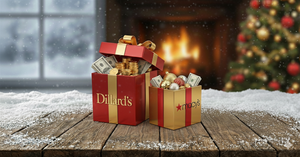
As of October 13, 2025, the financial markets are yet to unfold their daily narrative. However, if the Consumer Discretionary sector were to lead a significant rebound in the S&P 500 today, it would send a powerful signal regarding investor sentiment and the broader economic outlook. Such a performance would suggest a robust appetite for risk and a strong belief in the resilience of consumer spending, which is a cornerstone of economic growth.
This hypothetical scenario, where non-essential goods and services drive market gains, offers a critical lens through which to assess the underlying health of the economy and the prevailing mood on Wall Street. It would indicate a shift from defensive posturing to growth-oriented strategies, with investors willing to back companies that thrive when consumers feel secure enough to spend beyond their basic needs.
Decoding a Hypothetical Discretionary Surge
A notable surge in the Consumer Discretionary sector (NYSEARCA: XLY) on a day marked by a broader market rebound would be a significant development. Typically, this sector, which includes industries ranging from e-commerce and automotive to hospitality and entertainment, is highly sensitive to economic cycles. Its strong performance implies that investors are shrugging off potential headwinds and betting on sustained consumer demand. Key players within this sector, such as e-commerce giant Amazon (NASDAQ: AMZN), electric vehicle innovator Tesla (NASDAQ: TSLA), home improvement retailer Home Depot (NYSE: HD), and fast-food titan McDonald's (NYSE: MCD), would likely be among the primary beneficiaries, with their stock movements reflecting increased optimism.
The timeline leading up to such a hypothetical rebound would likely involve a period of market uncertainty or correction, from which the Consumer Discretionary sector emerges as a leader. This often follows positive economic data releases, such as strong employment figures, rising wages, or declining inflation, which bolster consumer purchasing power. Initial market reactions would see analysts and investors quickly re-evaluating their positions, potentially rotating capital from more defensive sectors into growth-oriented ones, perceiving a clearer path for corporate earnings growth within discretionary businesses. This shift would underscore a collective belief that economic conditions are stable, or even improving, thus encouraging consumers to open their wallets for non-essential purchases.
Potential Winners and Losers in a Discretionary-Led Market
In a scenario where the Consumer Discretionary sector spearheads a market rally, several companies would likely emerge as clear winners. Companies with strong brand recognition, robust e-commerce platforms, and innovative product pipelines are typically best positioned to capitalize on increased consumer spending. For instance, luxury goods retailers and high-end automotive manufacturers would see renewed interest, as affluent consumers feel more confident about making significant purchases. Travel and leisure companies, including airlines, cruise lines, and hotel chains, would also experience a significant boost, reflecting a return to pre-pandemic spending habits on experiences. Tech-driven discretionary firms, particularly those leveraging AI and personalization to enhance customer engagement, would also likely outperform.
Conversely, while a broad market rebound is generally positive, some companies or sub-sectors might see relatively less uplift, or even face challenges. Value-oriented discretionary retailers, for example, might not see the same percentage gains if the rebound is driven primarily by higher-income consumer spending. Furthermore, companies with heavy debt loads or those susceptible to rising interest rates might find their gains tempered, even in an optimistic environment. The increased focus on discretionary spending could also draw capital away from more defensive sectors like Consumer Staples (NYSEARCA: XLP) or Utilities (NYSEARCA: XLU), as investors seek higher growth potential elsewhere. This dynamic highlights the rotational nature of market rebounds, where specific sectors take the lead based on evolving economic perceptions.
Broader Significance and Economic Barometer
A strong showing from the Consumer Discretionary sector within a broader market rebound is more than just a daily market event; it serves as a critical economic barometer. This performance fits squarely into the broader trend of investor confidence returning to growth assets, often signaling a robust economic expansion phase. When consumers are confident about their job security and future income, they are more inclined to spend on non-essential items, directly boosting the revenues and profits of companies in this sector. This confidence often correlates with positive macroeconomic indicators such as declining unemployment rates, stable inflation, and a favorable interest rate environment.
The ripple effects of such a performance would extend far beyond the immediate sector. Competitors in other industries might feel pressure to innovate or enhance their offerings to capture a share of the renewed consumer enthusiasm. Partners in the supply chain, from raw material providers to logistics companies, would also experience increased demand. Historically, periods of strong Consumer Discretionary performance have often preceded or accompanied sustained economic growth, making this sector a bellwether for the overall health of the economy. Regulatory or policy implications could arise if this spending surge leads to concerns about overheating or asset bubbles, potentially prompting central banks to consider tighter monetary policies to manage inflation. Comparisons to past economic recoveries show that the Consumer Discretionary sector often leads the charge out of downturns, reinforcing its role as a forward-looking indicator.
Charting the Path Ahead: Opportunities and Challenges
Looking ahead, a sustained rally in the Consumer Discretionary sector presents both significant opportunities and potential challenges. In the short term, investors will be closely watching upcoming earnings reports from key companies within the sector, as well as monthly retail sales figures and consumer sentiment indices, to confirm the durability of the spending trend. Strategic pivots for companies might include further investment in e-commerce infrastructure, supply chain resilience, and personalized customer experiences to maintain competitive edge. Market opportunities could emerge in sub-sectors poised for secular growth, such as experiential travel, sustainable consumer products, and subscription-based services.
Long-term possibilities include a sustained period of economic expansion fueled by healthy consumer balance sheets and innovation. However, challenges could arise from unexpected economic shocks, geopolitical instability, or a resurgence of inflationary pressures that erode purchasing power. Potential scenarios range from a "soft landing" where the economy gradually normalizes, allowing discretionary spending to thrive, to a more volatile "boom-bust" cycle if growth becomes unsustainable. Investors should monitor shifts in consumer preferences, technological disruptions, and the evolving regulatory landscape, as these factors will heavily influence the sector's trajectory and the performance of individual companies within it.
Concluding Thoughts on Market Momentum
In summary, a hypothetical scenario where the Consumer Discretionary sector leads a market rebound on October 13, 2025, would be a clear and compelling signal of robust investor confidence and an optimistic economic outlook. The sector's sensitivity to consumer spending makes it an excellent proxy for the overall health of the economy, indicating that households are feeling secure enough to spend on non-essential goods and services. This performance would underscore a broader market rotation towards growth assets, moving beyond defensive plays.
Moving forward, investors should pay close attention to consumer sentiment surveys, retail sales data, and the earnings reports of major discretionary companies (e.g., Amazon (NASDAQ: AMZN), Tesla (NASDAQ: TSLA), Home Depot (NYSE: HD)). The sector's ability to maintain momentum will be crucial in determining the sustainability of the broader market rally. While the specifics of October 13, 2025, remain in the realm of future possibilities, the principles governing the Consumer Discretionary sector's role as a market leader in times of economic confidence are timeless. Its performance will continue to be a vital indicator for assessing market direction and economic resilience in the coming months.
This content is intended for informational purposes only and is not financial advice






